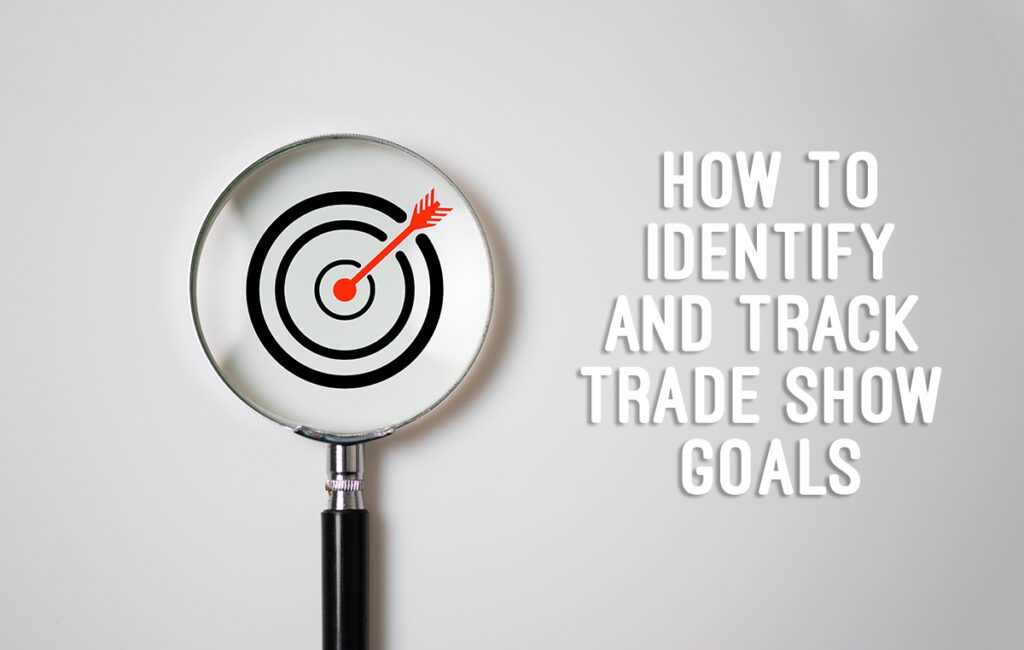Do you want to avoid that queasy feeling you get right before the start of a trade show? Maybe you briefly ask yourself,
“What am I doing here?”
Feel confident at your next trade show using these three steps to clarify, set goals, and track your trade show success. Attending a trade show requires significant investments of both time and money. Having a well-planned strategy can be very profitable in terms of qualified leads and increased revenue. Having defined goals will keep your company on track throughout the design process and make measuring your return on investment easier.
First, Clarify Your Trade Show Objectives
Why are you spending money, resources and valuable time to attend a show?
- For publicity or to build brand awareness?
- Showcasing or unveiling new products?
- Are you trying to increase sales by gaining more qualified leads?
- Do you want to see what your competitors are up to?
- Do you want to network with other industry professionals or vendors?
Once your objectives have been identified, choose only one or two and focus. It can be tempting to paint with a broad goals brush but this will only water down your efforts. Effective programs identify key objectives and gear all efforts towards achieving that goal.
Second, Set SMART Goals for Your Trade Show Participation
It is important to set goals that are Specific, Measurable, Attainable, Realistic and Timely (SMART).
When you set SMART goals for your organization, make sure they are appropriate for your defined objectives, and relevant to how your industry conducts business. Be aggressive and optimistic but don’t set yourself up for failure. All team members must be on the same page when it comes to the definition of success, the time frame, and how results will be measured.
Goal examples:
- Capture contact information for 15 new talent/employee prospects during the event
- Increase booth attendance by 30 percent over last year
- Capture contact information for 12 new vendor prospects during the event and establish relationships within 2-weeks
- Schedule 45 sales appointments at the event
- Increase sales that come from leads generated at the trade show by 25% compared with last year (within a 6 months sales cycle)
- Generate a 50 percent increase in website traffic within two weeks post-show
- Generate a 20 percent profit margin for the event (using pre-established ROI metrics)
Third, Track Trade Show ROI
Define your lead generation ROI metrics before you design your program.
There are multiple ways to measure ROI but these two are the most common.
- ROI = (Event-Related Sales – Event Costs)/Event Costs
- ROI = ((Number of Event-Related Leads x Value of a Lead) – Event-Related Costs)/Event-Related Costs
The ROI measurement you choose should be based on the buying cycle time frame that is specific to your industry. It is unrealistic to expect that your company will come back from a show the first year with data sufficient enough for determining if exhibiting was, in fact, worth the time and money spent.
At Apple Rock we recommend attending the same show for three years, using the first year as a base line. In the second and third year you should see increases in sales and qualified leads generated. You should continue to re-evaluate your goals and budget allocations every year. Exhibiting in trade shows can be a great investment as long as you continue to measure your results and fine tune the program as you go.
The best in the trade show business know that a comprehensive, strategic approach is the best way to build an effective display and successful event program. Your vendor should ask about your goals, and should be eager to help you craft your implementation strategy.
Share your goals with your trade show display vendor to craft the best strategy for design and implementation.
Apple Rock offers a free one-hour consultation with one of our seasoned trade show pros to deep-dive into your program goals and explore how we can help you achieve them.
Planning for Long-Term Success: The Importance of Evaluating Your Trade Show Participation Over Time
It can take years to accurately determine if exhibiting was, in fact, worth the time and money spent. Plan to participate in a show for at least three years to have a clear picture of the impact on your company. Use the first year as a baseline. In the second and third years you should see an increase in sales and in the number of qualified leads you generate. Continue evaluating your goals, strategy, and budget allocations each year.
Exhibiting in trade shows can be an excellent investment as long as you measure your results over time and have realistic goals.






